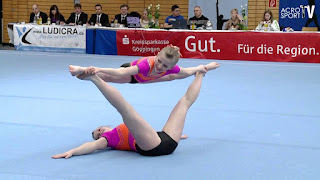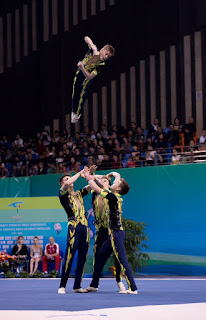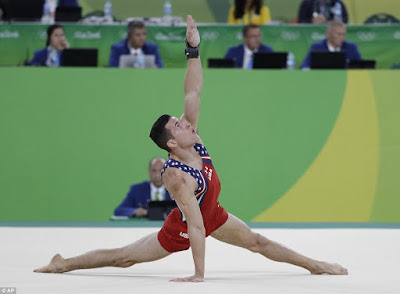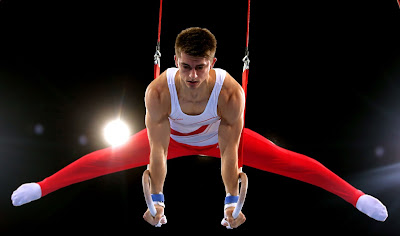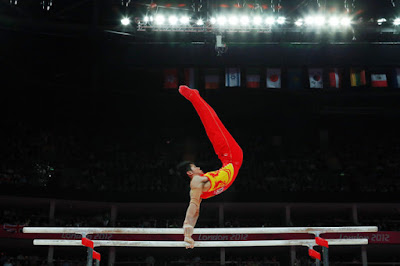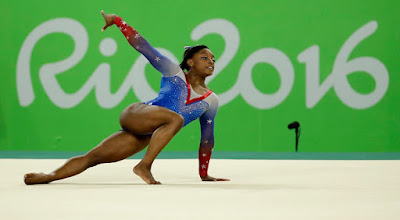Acrobatic gymnastics also is known as sports acrobatics. Acrobatic gymnastics began in the Soviet Union in the 1930s and the first world championships were held in 1974. It is a discipline where gymnasts perform together consisting of acrobatic moves, dance, and music within specific time durations. In Acrobatic Gymnastics there are three types of routine and five group categories. All routines are performed in music and take place on a 12m x 12m floor area.
In Acrobatic gymnastics the focus is on strength, grace, poise, Choreography, flexibility, catches. Each pair or group performs routines featuring gymnastics tumbling skills, balances and dynamic skills with a flight. All exercises are choreographed and performed to music.
More information: abouts Gymnastics
Including one base and one top.
In Acrobatic gymnastics the focus is on strength, grace, poise, Choreography, flexibility, catches. Each pair or group performs routines featuring gymnastics tumbling skills, balances and dynamic skills with a flight. All exercises are choreographed and performed to music.
Routines
Balance
Dynamic
Combined
More information: abouts Gymnastics
Types of Acrobatic Gymnastics
There are five types in acrobatic gymnasticsMen's Pairs
Women’s Pairs
Including one base and one top.Mixed Pairs
Including a male base and a female top.Women's Groups/ Women’s trio
Including a base, middle, and a top.Men's Fours/ Men’s group
Including a base, two middle and a top.Scoring
In acrobatic gymnastics, the score is given out of 30.00. The following are the categories in which the athletes are scored.- an artistic component which evaluates the athlete performance in terms of choreography, diversity, and ability to perform to the music; (scored out of 10).
- an execution component which evaluates the deductions incurred by the athlete while performing the partner and individual skills of the routine. This is scored out of 10, but then later doubled to emphasize its importance.
- a difficulty component which is the overall equivalent score based on the degree of difficulty and number of skills (the difficulty score is determined by the value allocated to skills according to the Code of Points).
Major Events In Acrobatic Gymnastics
- World Championships
- World Cup
- The World Games










